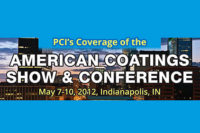RadLaunch, the unique idea accelerator for ultraviolet (UV) and electron beam (EB) technology start-ups, students and innovators, has selected five key technology developers for 2020 and three special recognition awards. RadTech, the nonprofit for UV+EB Technology, created RadLaunch in recognition of the growing importance of the technology with the digitization of manufacturing and requirements for safe, clean, rapid processes in the fast-emerging circular economy. New innovations in materials, optics, design and data, are propelling UV+EB in additive manufacturing/3D printing, inkjet, food packaging, automotive, medical, public health and electronics applications.
For the first time the competition includes new awards sponsored by the International Ultraviolet Association (IUVA). IUVA is a nonprofit dedicated to UV applications in public health and the environment, with a special focus on water, food and beverage and health care.
The RadLaunch 2020 class will all give presentations at RadTech 2020 and the co-located IUVA Americas 2020, March 8-11, 2020 in Orlando, FL.
Some members of the RadLaunch Class of 2020 include:
· Bio-based 1,5-Pentanediol: A New Renewable Monomer for the Radcure Industry, Pyran LLC
The vast majority of chemicals are made from nonrenewable and often expensive petroleum (oil) resources. Pyran co-founders Professor George Huber, Dr. Kevin Barnett and Dr. Kefeng Huang set out to find a better way, and discovered a new pathway to make a chemical called 1,5-pentanediol (1,5-PDO) from renewable resources, such as corn cobs. Pyran’s technology allows them to make their renewable 1,5-PDO at 30-50% lower costs than similar oil-based chemicals. Pyran’s 1,5-PDO product is a major component in many ultraviolet (UV) cure coatings, which are more efficient and produce much lower amounts of harmful emissions compared to conventional coating technologies, offering consumers environmentally friendly products that won’t break the bank.
· Solvent-Free Radical Photopolymerization that Continues its Extensive Post-Conversion in the Dark, Team from University of Colorado
A new photoinitiating system with unprecedented photo-efficiency and extensive post-conversion in the dark has been developed at the University of Colorado by the team of Kangmin Kim, Jasmine Sinha, Charles Musgrave and Jeff Stansbury. This innovation allows reduced light exposure times while guaranteeing complete polymerization, even in situations involving compromised light access due to nonuniform light sources, irregular surfaces or thicker samples that might otherwise preclude a photocuring process. This discovery will further elevate the green technology to a new standard and increase the scope of photocuring technologies into new application areas.
· Real-Time Feedback Controlled Monomer Conversion: a New Paradigm for UV Curing Process Control, Eindhoven University of Technology’s High Tech Systems Center and TNO (Eindhoven, The Netherlands)
To prepare UV curing technology for the imminent fourth industrial revolution, Ph.D. researcher Thomas Hafkamp from Eindhoven University of Technology proposes a new paradigm for UV curing process control. The proposal consists of acquiring in-situ measurement data of monomer conversion from a spectrometer and feeding this data into a real-time feedback controller. The feedback controller computes a corrective action for the UV light source if the monomer conversion momentarily deviates from the intended value. This innovation makes the UV curing process more robust to disturbances and may prove to be an indispensable solution for quality control.





